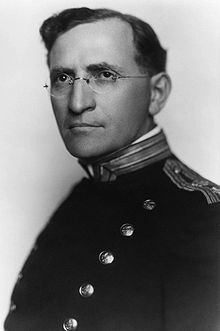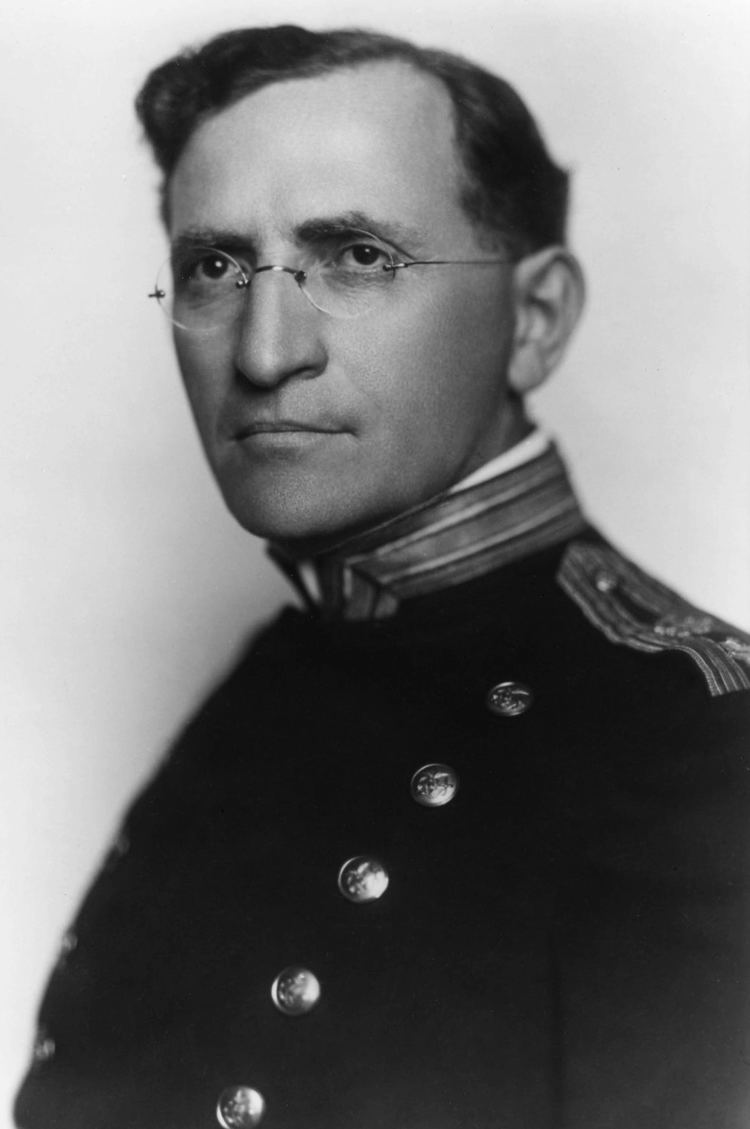Nationality Hungarian-American Role Physician | Name Joseph Goldberger Spouse Mary Goldberger | |
 | ||
Died January 17, 1929, Washington, D.C., United States Education New York University School of Medicine, City College of New York | ||
Pellagra - A Medical Mystery - Extra History
Joseph Goldberger (Hungarian: Goldberger József) (July 16, 1874 – January 17, 1929) was an American physician and epidemiologist in the United States Public Health Service (PHS). As a public health official, he was an advocate for scientific and social recognition of the links between poverty and disease. Furthermore, due to his important work on the link between pellagra and poor diet, he was nominated five times for the Nobel Prize.
Contents
- Pellagra A Medical Mystery Extra History
- Cure for Pellagra Dark Matters
- Early life
- Professional career
- Pellagra Studies
- Legacy
- References

Cure for Pellagra | Dark Matters
Early life
Goldberger was born in Girált, Sáros County, Kingdom of Hungary (present-day Slovakia) in a Jewish family. The youngest of six children, he emigrated to the U.S. with his parents in 1883, eventually settling in Manhattan's Lower East Side. After completing his secondary education, Goldberger entered the City College of New York intending to pursue an engineering career. After a chance encounter in 1892, however, Goldberger became interested in medicine and transferred to the Bellevue Hospital Medical College (now the New York University School of Medicine), receiving his M.D. degree in 1895. His early work on Ellis Island made him a standout investigator for detecting infectious diseases. He became a well-known epidemiologist.
Professional career
Setting up a private medical practice in Wilkes-Barre, Pennsylvania, Goldberger soon became intellectually restless. He joined the Public Health Service in 1899, serving first post at the Port of New York, where he conducted health inspections of newly arrived immigrants.
From 1902–1906, Goldberger held a number of epidemiology posts—in Mexico, Puerto Rico, Mississippi and Louisiana. He was involved the Public Health Service's efforts to combat yellow fever, typhus, dengue fever, and typhoid fever. He gave a particularly noted lecture in Boston, Massachusetts on the effects of parasites in disease transmission. In 1909, Goldberger published his research on Schamberg disease, an acarine mite-based parasitic infection common among poor, inner-city populations. He also worked with John F. Anderson investigating the transmission of measles and typhus.
Pellagra Studies
In 1914, Goldberger was asked by US Surgeon General Rupert Blue to investigate pellagra, then an endemic disease in the Southern US. Previously it had been rather rare in the United States, but an epidemic broke it out in 1906, primarily in the South, and continued until the 1940s. By 1912, South Carolina alone had 30,000 cases, and with a death rate of 40% pellagra had devastating effects on the region.
Pellagra was an incredibly painful skin disease that was commonly identified in tropic areas. Some physicians at the time believed the disease arose in consequence to either bad genes, airborne germ, or miasma arising from poor sanitary conditions. Goldberger's theory that pellagra was associated with diet contradicted the most widely accepted medical opinion that pellagra was an infectious disease.[5] The germ theory of disease had recently become popular in not only the medical field but also the public’s consciousness. As a result, the germ theory was often generalized to far more ailments than it actually caused. Goldberger on the other hand suspected that diet was the true cause, which he came to believe through his observations of pellagra and the fact that hospital staff who worked closely with pellagra patients did not fall sick themselves. Furthermore, pellagra cases were overwhelmingly poor Southerners, especially African Americans and sharecroppers. This was a group that often ate filling and starchy but nutrient-poor foods, especially those derived from corn.
His investigation into pellagra led him to conduct two coinciding experiments starting in 1914. One study focused on two orphanages experiencing rampant pellagra. 172 orphans in the study had the disease already, while 168 subjects did not. With federal funding, he switched them to a more varied diet that included fresh meat, vegetables, milk, and eggs. After several weeks, there were no new cases and almost all of the afflicted orphans had recovered. In the two years of the study, there was only one new case.
His next experiment took place at the Georgia State Sanitarium, the largest mental asylum in the South. Like the orphanages, the asylum had high rates of pellagra. However, this experiment included both a research and control group. Also, he studied two categories of human subjects – black women and white women. By assessing their dietary intake, Goldberger aim to find conclusions to bolster his hypothesis.The control group continued receiving the same food as before, but the experimental group was given a more balanced diet. Over the two-year span, half of the control group was sick while everyone on the varied diet recovered. In fact, the latter group improved so much that there was a high dropout rate since many became well enough to leave the institution. Unfortunately, after the study the funding for more nutritious food dried up and the pellagra rates in the orphanages and asylum returned to pre-study levels.
Goldberger's next objective was to confirm the causation between a poor diet and pellagra. To do this, Goldberger met with Earl Brewer, the governor of Mississippi, in 1915. He requested access to prisoners of the Rankin State Prison Farm to try and induce pellagra in them. He chose this prison in particular because it previously had no cases of pellagra. After negotiation, Earl accepted Goldberger’s request in return for pardons for the prisoners (some of whom had connections with the governor).
Goldberger experimented on eleven healthy volunteers from the Rankin State Prison Farm for this nine-month study. The subjects were put under a strict and heavily monitored corn-based diet bereft of essential nutrients like meat, milk, or vegetables. Goldberger soon observed that the subjects becoming weaker and weaker as the days went on. After six months, five out of the eleven patients contracted pellagra and the rest had symptoms corresponding with pellagra. The prisoners reported enduring incredible agony once they were afflicted, and some even tried to drop out of the study but were prevented from doing so. While an experiment like this would never be approved by a modern institutional review board, at the time prisoners and other disadvantaged groups were routinely used as research subjects. Medical ethics were very informal and loosely regulated, especially due to the belief that successful medical ends would justify harsh scientific means. This is not to say that Goldberger avoided controversy in his lifetime; after his study methods became known many critics accused him of torturing the prisoners. Even today he is a very controversial figure. Some praise him as a public health hero for his discoveries on pellagra, and at one time Goldberger was even considered for the Nobel Prize for his findings on pellagra . However, others are disturbed by his callous disregard for his research subjects, especially the prisoners.
Despite his careful experiments, Goldberger's discovery proved socially and politically unacceptable, and he made little progress in gaining support for the treating of pellagra.[3] Besides the popularity of the germ theory, opposition also came from Southern leaders who resented a Northerner claiming that the pellagra outbreak was a product of the region’s widespread poverty. Consequently, Goldberger became extremely frustrated. He conducted one final experiment, referred to as “filth parties”, to silent the critics. In 1916 he injected 16 volunteers – including himself, his wife, and his assistant – with pellagric blood over seven trials. Afterwards they experienced diarrhea and nausea but did not contract the disease. However, this too was rejected by critics for using almost entirely male subjects when pellagra was supposedly more common in females.
Though Goldberger established a clear link between pellagra and diet, he never discovered the exact nutrient deficiency that caused it. It was not until 1937 that Conrad Elvehjem discovered that pellagra is caused by a dietary lack of the B vitamin niacin, along with reduced levels of the essential amino acid tryptophan.[7] Dr. Tom Spies also contributed to this finding.
However, Joseph Goldberger did not live to see this important discovery. He died on January 19, 1929 from renal cell carcinoma.
